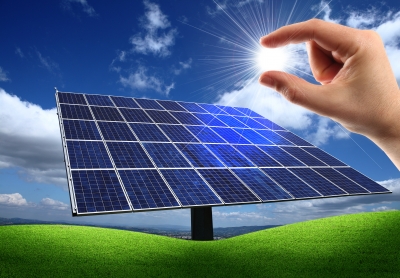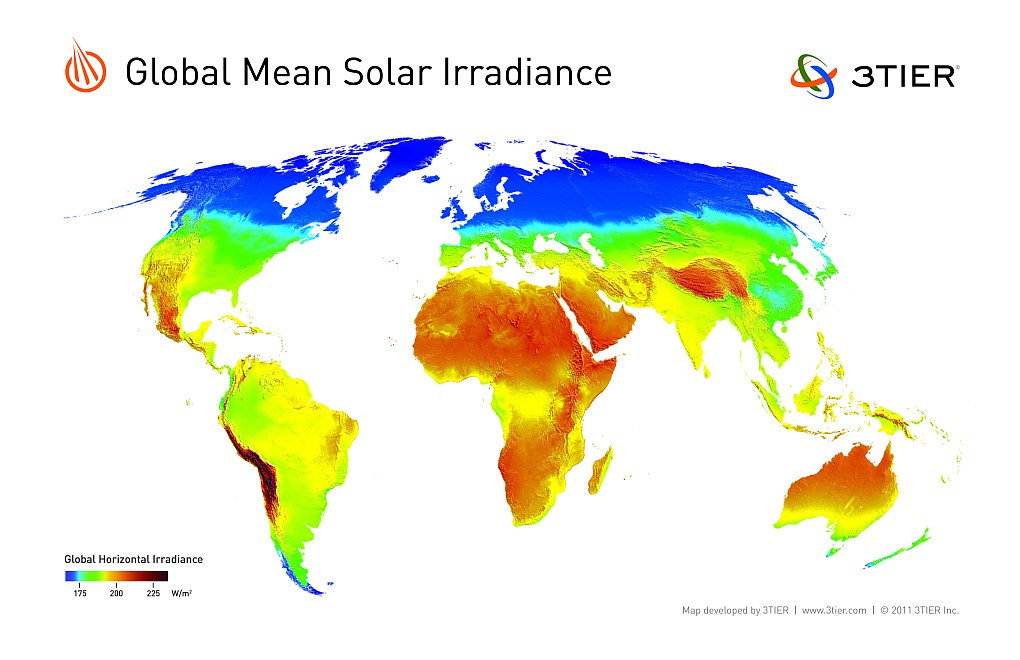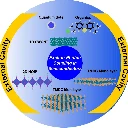![]() Before we can all admire the new and exciting green future, let us have a clear and analytic look on what the disadvantages of solar energy are. Let us also find out what these disadvantages mean practically.
Before we can all admire the new and exciting green future, let us have a clear and analytic look on what the disadvantages of solar energy are. Let us also find out what these disadvantages mean practically.
Nobody would disagree to a sustainable development of our energy supply. Nevertheless, the success of solar energy will hugely depend on its economic competitiveness compared to other sources of energy. Let us have a brief look at what the main disadvantages of solar energy are.
Space Requirement
 Once you take a sun ray to be absorbed in a solar panel, it is used. This means that you can only use a certain area and basically not use the third spacial dimension, height.
Once you take a sun ray to be absorbed in a solar panel, it is used. This means that you can only use a certain area and basically not use the third spacial dimension, height.
Consequences: For a certain amount of energy to be produced, one will have to buy/rent a certain amount of area - either directly on the ground or for example on the rooftop of some building.
This might be pretty expensive. Furthermore, the sunlight as a resource might not be used for any other means, and puts solar energy into competition with i.e. agriculture which is at least ethically questionable.
Cost and Inefficiency of Solar Panels
Even if solar energy devices like solar cells are fabricated in mass production, they are still pretty expensive. The time until just a photovoltaic panel pais itself varies between roughly ten and twenty years for countries with and without governmental aid programs. This is a very huge time since other expenses have to be counted equally. This time, however, could be much smaller if solar panels would be more efficient.
At the moment, commercially available solar panels reach around 22% efficiency - steam turbines which are responsible for the majority of conventional energy production work at around 40% efficiency, a huge difference.
Although multijunction solar cells have been demonstrated to work at much higher efficiencies also around 40%. The production of such devices on the other hand is extremely sophisticated and costly such that they are basically only used in satellites.
Consequences: For private companies without huge governmental aid it is a very risky endeavour to invest in a solar energy system. This is supported by the fact that the output powers of the biggest industrial power plants are only in the ten MW range at the moment, as for example the Siemens-owned solar parc in Les Mées, southern France with an output of 31MW on 0.7km² (see picture, ).
Nuclear power plants, on the other hand, have an output of over one GW. This brings us back to the space issue - to produce 1GW with a solar power plant would require an area in the order of 1GW / 31MW · 0.7km² ≈ 23km².

Solar power plant in Les Mées, southern France. Image property of Siemens AG.
Solar Energy Production needs Sunlight
Renewable energy sources like solar and wind power plants are so-called intemittant energy sources - they cannot supply energy the whole time since they depend on certain environmental conditions.
Consequences: a household that solely depends on green energy will always need to have a suitable battery system. Even though energy storage devices like rechargable batteries are getting better each year as we can see in the decreased sizes for laptop batteries, high-performance energy storage devices useful for industrial applications are yet to be developped. Now any kind of energy storage device has a certain efficiency on its own.
Pumped-storage hydroelectricity is by far the most used high-power storage system used for power plants. Their efficiency around 70...80% lowers the overall efficiency of solar energy quite significantly.
Furthermore, the mean solar irradiance hugely depends on the location of the solar power plant^. Below we can see a figure of the global distribution of horizontal irradiance:

Distribution of solar irradiance: solar power plants make sense only in a few parts of the world, figure copyright 3tier.com.
One of the main figures to understand a suitable placement of solar energy power plants.
We can see that most parts of Africa, North Australia, Saudi Arabia and northern Middle America are probably the best regions to build solar power plants^. Everywhere else, the solar irradiance is weaker. Interestingly, Germany, not exactly known for its extremely long and sunny summers produces by far the most solar energy worldwide as of 2011 due to huge subsidies that ended in 2012.
Consequences: If we agree that solar energy should play a massive role for a sustainable energy supply of this century, not only efficient panels are important but also their placement. As for ordinary energy sources such as coal, gas and oil, we find regions that are rich in sunlight. Those regions will most likely become the main producers of solar energy. However, technically, solar energy production in or close to deserts has certain disadvantages:
- electrical devices may not work properly for high temperatures - inefficient production
- very little vegetation in deserts may provide a natural protection from sandstorms - equipment may be destroyed
- energy production extremely far away from consumption - huge additional infrastructure
Nevertheless, the use of solar technology is a big economical and political chance, especially for Africa. One step in this direction is the desertec project. It aims to install solar power plants accross nothern Africa. The success of this project, in technical and political terms, will be a main indicator of the applicability of solar energy on large scales.
Conclusions
If solar power will be a story of success is not clear. We have seen that there are several disadvantages of solar energy: economical, technical and also ethical ones. If we further consider the natural distribution of solar irradiance accross the planet, politics will also have a big influence.
These are all problems we are and will be facing. Nevertheless, we will have to solve these problems: starting with the industrialization and the excessive use of coal as energy source results in enormous air pollution since the 19th century, Chernobyl and Fukushima outline humans incapability to control nuclear energy and oil is simply running out: The transition to green energy is without alternative, but we will not be successfull if we are not very careful in the transformation process and cannot ignore the disadvantages of the new forms of energy production.
^The spectrum that we may use also depends on the location on earth. This is, however, only a minor contribution.
^Note that mountainous regions have naturally high solar irradiances since the solar radiation has to pass less atmosphere which means less attenuation of the light's power. Nevertheless it is questionable if these regions are useful for solar energy production from an economical point of view.
If you like the article, please consider to share it with your friends and colleagues. Any feedback is also very appreciated, either here or you may directly comment on the disadvantages of solar energy below. Thank you for reading!







